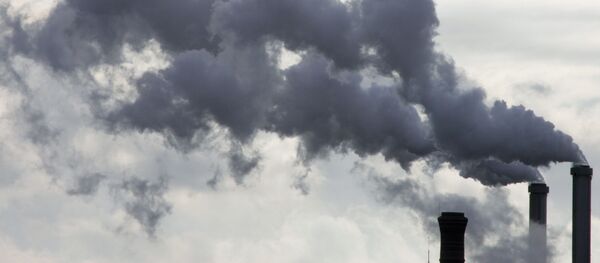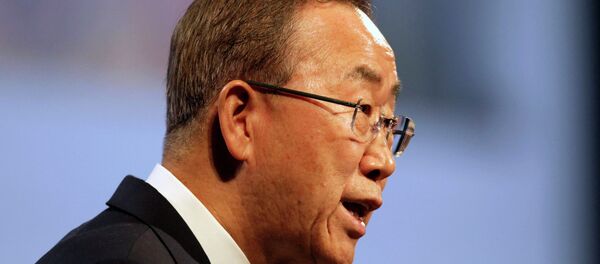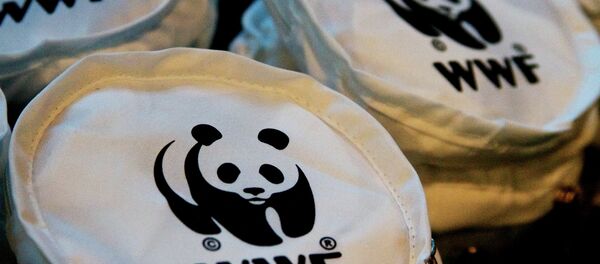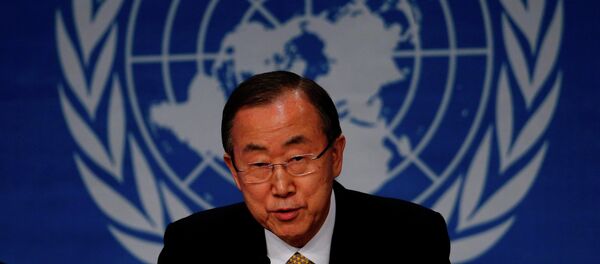MOSCOW, December 25 (Sputnik), Anastasia Levchenko — The outgoing year has been challenging for the international community in terms of environmental and health protection, with existing threats ongoing, and grave new dangers emerging.
Climate change and global warming
The New York summit was attended by leaders from 100 countries and more than 800 finance, business and civil society professionals, according to the UN 2014 Climate Change Summary published on the UN website.
Participants of the summit made a number of declarations, such as a commitment to limit global temperature increases to less than two degrees Celsius and to promote technologies to boost energy efficiency and cut emissions.
During the conference palm oil producers and commodities businesses committed to zero net deforestation by 2020. Transport organizations also promised to reduce emissions. In addition, leaders at the summit declared their intention to allocate more than $200 billion for so-called low-carbon and climate-resilient development. The latter implies assessing risks to the environment and selecting environmentally friendly development technologies accordingly.
Participants of the summit committed themselves to drafting a universal climate agreement in Lima, Peru, in December.
Participants discussed the procedure of submitting monetary contributions (so-called Intended Nationally Determined Contributions) to the new agreement to be signed in Paris.
A number of states – in particular, Norway, Australia, Belgium, Peru, Colombia and Austria – made pledges to the Green Climate Fund, while Germany promised to allocate 55 million euros ($67 million) to the Adaptation Fund.
However, no specific steps to cut emissions to stop climate change were set, therefore pressure on the participants to come to an agreement in the talks in Paris in 2015 is expected to be intense.
Another significant step in environmental protection was the October approval by the European Council of the 2030 Framework for Climate and Energy. This legislation by the European Commission sets domestic greenhouse gas emission reductions to 40 percent compared with 1990 levels, raises energy efficiency by 30 percent and increases the production of renewable energy by 27 percent by 2030.
The proposal was welcomed by major international companies, such as Unilever, IKEA, Philips, Eneco and several other corporations. However, eastern and central European states were less enthusiastic. The Czech Republic, Slovakia, Hungary, Poland, Bulgaria and Romania downplayed the proposed policies, calling them unrealistic. These countries are among the poorest in Europe and produce high volumes of carbon dioxide due to their reliance on burning coal for energy.
Also in October, the mayors of 100 European cities made a commitment to address climate change concerns as part of the Mayors Adapt initiative launched in March 2014. Major infrastructure centers, among them Barcelona, Copenhagen, Frankfurt and Glasgow, agreed to work toward cutting greenhouse emissions.
However, the progress in reducing greenhouse emissions has not been sufficient so far, according to the United Nations' Intergovernmental Panel on Climate Change (IPCC). In its Climate Change 2014 report issued in November the IPCC made it clear the problem of climate change has not been alleviated and, instead, is becoming more acute. IPCC warned that the continued emission of greenhouse gases would cause profound climate change and these changes could have severe global impacts.
The panel called for the termination of unrestricted fossil fuel use by 2100. In order to meet the goal of preventing global warming by more than 3.6 degrees Fahrenheit governments must restrict emissions of greenhouse gases by 40-70 percent by 2050 and by 100 percent by 2100, the IPCC stated.
In a commitment to decrease emissions, China and the United States agreed in November to transition to low-carbon economies.
The Arctic
Key stakeholders (members of the Arctic Council – Russia, Canada, Denmark, Finland, Iceland, Norway, Sweden and the United States) have taken steps to assert their rights in the region, while a number of non-Arctic states have also made claims.
In August 2014, the Arctic Council met in Naryan-Mar, Russia, followed by the council's ministerial meeting in October. Among the main topics discussed at the Fourth International Meeting of the Arctic Council were safety issues, infrastructure, and the delineation, use and maintenance of the Northern Sea Route, the use of which is an issue gaining traction as an alternative to traditional maritime trade routes between Europe to Asia. The United States did not send a delegation to the meeting.
Claims regarding the demarcation of extended continental shelf areas in the Arctic have been at the forefront of Arctic issues this year.
The unregulated use and development of the seafloor by all coastal Arctic states is currently limited to exclusive economic zones that extend 200 nautical miles from the shoreline. Following a Canadian submission to the United Nations Commission on the Limits of the Continental Shelf (CLCS) for the expansion of its territories in the Arctic Ocean in late 2013, Russia submitted a similar claim in 2014.
Denmark and its autonomous dependent territory Greenland also submitted claims to the Arctic Shelf to the United Nations.
Another major issue concerning the Arctic regions in 2014 is militarization.
In recent years Russia has taken a number of political, economic and military measures to protect its interests in the Arctic as a response to NATO's increased activity in the region.
In April, Russian President Vladimir Putin stated that Russia would build a unified network of naval facilities in its Arctic territories to host advanced warships and submarines as part of a plan to boost the protection of the country's interests and borders in the region. Putin called for strengthening Russian military infrastructure in the Arctic to improve border control. According to Defense Minister Sergei Shoigu, Russia will complete the deployment of military units on its territory along the Arctic Circle by the end of 2014.
At the same time, Putin has repeatedly stated that Russia has no plans to militarize the Arctic, but is taking measures to ensure Russian defense capabilities there.
Oil and gas exploration in the Arctic has always been an important issue for the so-called Arctic powers. This year, exploration was hampered in two ways. Western sanctions were imposed on Russia over its alleged role in the Ukrainian crisis. This was followed by a global decline in oil prices.
The sanctions imposed by the United States and its allies have outlawed exports of equipment and technologies to Russia, among them those used in deep-water, Arctic and shale oil exploration. Responding to Western sanctions, Russia has strengthened bilateral cooperation with China in joint energy projects. Notwithstanding the high level of interest in Arctic exploration and development, the recent oil price decline has led experts to predict a reduction of interest in oil extraction in the area.
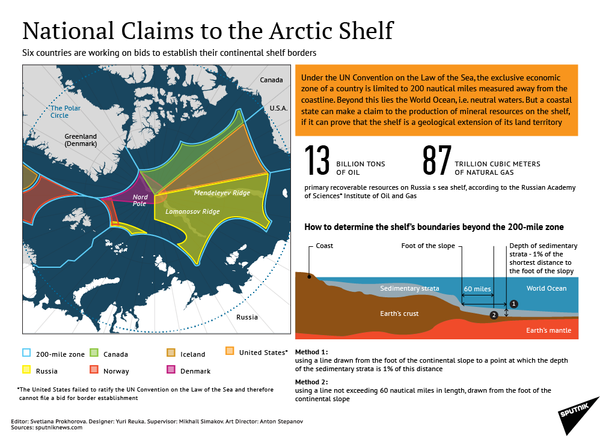
Fracking
The controversial technique implies disposing large volumes of wastewater by injecting it underground after drilling. The injected fluids travel along fault lines and are believed to cause earthquakes. Moreover, contamination of groundwater by chemicals including ethylene glycol (can damage kidneys), formaldehyde and naphthalene (may cause cancer), as well as significant carbon emissions are dangerous for all living creatures and is a major concern for environmentalists and populations living in proximity to the wells.
The health threat posed by the fracking process was confirmed in a December 17 report by the Natural Resources Defense Council (NRDC) of the United States.
Many environmental protection organizations, such as Greenpeace and The Center for Biological Diversity and Environmental Integrity Project, have spoken against fracking earlier in the year. In November, a report by the Chief Scientific Adviser of the UK Government Mark Walport claimed that fracking could become one of the biggest dangers to human health in the last 60 years. The state of New York passed a law December 17 banning fracking anywhere within its borders.
Nevertheless, other areas in the United States and the United Kingdom have seen an increase in fracking development, claiming the technique contributes to energy security and short-term job creation. In the United Kingdom fracking was resumed in spite of a 2011-2012 ban on suspicion that the process triggered a number of minor earthquakes in the country.
Britain and the United States have experienced protests during the summer over plans by government and industry to increase the exploration for and extraction of shale gas. Massive opposition in Colorado led to a withdrawal in August of two fracking initiatives in the state. In December, more than 200 UK anti-fracking groups addressed Prime Minister David Cameron in a letter calling for a ban on fracking until a methodical, scientific and impartial investigation of its effect on people's health could be carried out.
Ebola
The greatest global health threat, not only in 2014 but also in the history of human disease, has been the Ebola virus outbreak, according to the World Health Organization (WHO).
The deadly virus is transmitted through direct contact with the bodily fluids of those infected. Animals (primarily bats) can also be carriers.
At the moment, there is no officially approved vaccination against or cure for Ebola, however, Russia, the United Kingdom, the United States, Japan and Canada are working on the vaccine. The US Department of Health and Human Services announced on December 24 that clinical trials of US Ebola vaccines on volunteers in West Africa could begin in early 2015.
According to the latest figures from the World Health Organization, the death toll from the Ebola outbreak in Guinea, Liberia and Sierra Leone has surpassed 7,500, with more than 19,400 cases of the disease reported. Several cases of the disease have been registered outside of West Africa, notably in the United States and Spain.
The international community has taken concerted action in fighting the virus. A number of countries including the United States, Russia, European states, China are providing experts, funds, field hospitals, experimental antivirals and many other forms of logistical and financial support for health workers in countries hit by the virus.
Nurses and doctors fighting Ebola in West Africa were declared by Time magazine as the winners of its annual Person of the Year poll.
Nevertheless, the US Centers for Disease Control and Prevention (CDC) has recently announced that though the global response to Ebola has helped to slow down the epidemic in Liberia, the deadly virus continues to spread in Sierra Leone and Guinea.
Dengue fever has resurfaced. In fall 2014, China, India and Japan witnessed an increase in the number of fever cases, while in Malaysia the problem has been most acute. According to the Malaysian Health Ministry, since the beginning of 2014 and until November, the disease had claimed almost 170 lives in the country. Dengue is transmitted by the bite of a mosquito infected with dengue virus in tropical and subtropical regions. There is no standard treatment for the disease.
Another disease similar to dengue, the chikungunya virus, spread dramatically in August. Also transmitted by mosquitos, Chikungunya is rarely fatal but causes high fever, joint swelling, pain, nausea, headache, rash and fatigue. According to the Pan-American Health Organization, there have been more than 1 million cases of the virus since it started spreading throughout the Western hemisphere one year ago.
In addition, the deadly Middle East Respiratory Syndrome Coronavirus (MERS-CoV) has already affected more than 20 countries since it was first reported two years ago. The virus causes respiratory illnesses and was first reported in Saudi Arabia, from where it has spread to a number of Arab, European and North African countries. Camels are believed to be the primary carriers of the virus. A vaccine has not been developed yet.

